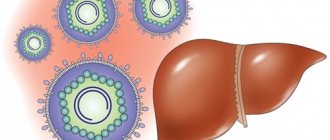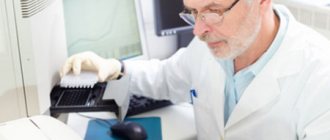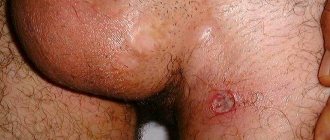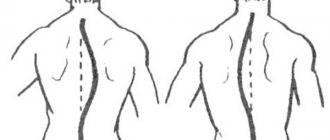Stem cell research is a window into the future of medicine. Since ancient times, it has always been obvious that some animals, such as lizards, were able to regenerate lost or damaged body parts. This ability, although less obvious, is also characteristic of the human race, just think of skin and blood.
However, we had to wait until the middle of the last century to accurately determine the cells responsible for this mechanism. It was only in 1950, when studying the problems of bone marrow transplantation, that the existence of stem cells was discovered. In 1956, the first bone marrow transplant was successfully performed.
Subsequent research revealed that a special type of stem cells - embryonic - are capable of potentially reproducing all types of cells present in our body. Therefore, we can hope that stem cells will make it possible in the near future to reconstruct and replace diseased or damaged tissues, and thus cure diseases such as cancer, diabetes, arthrosis, etc.
What are stem cells - specific features
Stem cells are cells that are not specialized to perform any specific function; all other cells present in the body are formed from them. They are capable of giving rise to all 200 different types of cells that make up the human body.
Photo source: Image Editor / CC BY-NC-ND
One stem cell can divide an unlimited number of times, being a source of specific cells for a specific tissue (blood, muscle, etc.).
Clinics providing stem cell transplantation services
There are not many such centers in Russia, but the main ones are the Center for Obstetrics, Gynecology and Perinatology of the Russian Academy of Medical Sciences, or rather their clinical immunology laboratory, headed by Gennady Sukhikh, the Commercial Stem Cell Institute, also the Pyramid group of clinics, headed by Alexander Teplyashin.
Stem cells along with injections of peptides (growth factors) are practiced by the Institute of Biological Medicine. They, according to the experts of this institute, activate the action of stem cells.
Korczak, a cosmetology and plastic surgery clinic, also has stem cell therapy as one of its areas of expertise. Here, cell material from a 3-month pig embryo grown on a nutrient medium is used. 3 days before administration, cultivation is stopped. Thanks to the “living” material, the effect of rejuvenation and healing is achieved in a couple of months and lasts for 1-2 years.
Placenta injections at the Japanese clinic Rhana are also called cell therapy, although this is completely different. They believe that the placenta is capable of rejuvenating the body, but it has a narrow range of action: relieving chronic fatigue syndrome and increasing libido and sexual activity.
Versage is also a clinic that uses stem cells in its work. But she specializes in anti-aging programs that include holistic treatments.
In Russia, cell therapy is actively used at the Novosibirsk Research Institute of Clinical Immunology of the Siberian Branch of the Russian Academy of Sciences. Also, for the treatment of heart diseases and cardioplasty in Vladivostok, Irkutsk, Tomsk and Novosibirsk, treatment and restorative procedures with human stem cells are used. Their use in rejuvenation and cosmetic procedures has become widespread in clinics in St. Petersburg.
Types of stem cells
Stem cells are only present in certain parts of the body and, today, can be taken from four different places:
- Adult cells. Present mainly in the bone marrow stroma and blood. These cells can only produce blood cells and are used for transplantation.
- Germinal. They originate from the inner cell mass of the blastocyst. Obviously, these cells can form any cells in the body.
- Amniotic. It is obtained from amniotic fluid, which is separated from pregnant women during amniocentesis.
- Fruit. The ones you get from abortions.
- Cord blood cells. That is, those that are present in the blood of the umbilical cord or placenta, access to which is gained during natural childbirth or caesarean section.
Some stem cells can become any cell in the body. In the human species, such cells are zygotes.
Others, on the contrary, are already partially differentiated and can become cells of a limited number of organs.
In which clinics can you undergo stem cell treatment?
In most developing countries, the latest cell therapy techniques are not used. Therefore, patients have to travel abroad to receive high-tech medical care. Germany has become one of the popular destinations for medical tourism. Stem cells have been successfully used here for a long time to treat various pathologies.
Here are some clinics where cell therapy is used:
- University Hospital Essen . This medical institution has a bone marrow transplant department. Here, transplantation of both autologous (own) and allogeneic (from a donor) stem cells is carried out. Using this technique, the clinic successfully treats leukemia, aplastic and myelodysplastic syndromes.
- Charité University Hospital . Cell therapy has been used here for cartilage restoration for more than 10 years. I grow them from stem cells and transplant them into the patient. This is one of the most modern methods of treating joint arthrosis. It allows you to delay or avoid endoprosthetics (installation of an artificial joint).
Stem cell use and future prospects
Currently, stem cells are used for:
Bone marrow transplantation . Used when the patient’s bone marrow, as a result of certain diseases, does not work properly. A transplant replaces blood or bone marrow stem cells.
Pathologies that can be cured with stem cell (bone marrow) transplantation:
- Thalassemia (an inherited disease that causes anemia)
- Bone marrow aplasia (failure of the bone marrow, resulting in failure to produce blood cells)
- Leukemia (errors in the development of white blood cells)
- Lymphoma (tumors localized in the hematopoietic organs)
- Myeloma (tumor disease with proliferation and accumulation of lymphocytes and other plasma cells in the brain).
Skin stem cell transplantation . Skin stem cells taken from a patient can be grown and multiplied in test tubes, and then reimplanted to restore areas of the body damaged by trauma (as happens after extensive burns).
In addition to burns, this method is also used to treat diabetic fistulas, epidermolysis bullosa (a group of genetic diseases leading to changes or absence of proteins that provide stickiness to the skin).
In the future, hopefully stem cells can be used for a large number of potential treatments. Below we list some of the possible applications that have the best prospects:
- Restoration of damaged heart tissue after a heart attack.
- Restoring brain tissue damaged by stroke.
- Restoration of tissue of arteries and veins affected by atherosclerosis or hypertension.
- Restoration of damaged nerve tissue in degenerative diseases such as Parkinson's disease and Alzheimer's disease, multiple sclerosis, Huntington's disease, etc.
- Restoration of the spinal cord damaged by trauma.
- Restoration of eye tissue (cornea and retina).
- Restoration of tissues of the musculoskeletal system.
- Reconstruction of articular cartilage (eg knee).
- Restoration of cells that accelerate catabolism, and the absence of which causes accumulation in lysosomes.
Organization of treatment abroad
If you are looking for a suitable clinic that uses innovative methods of treating various diseases, including using stem cells, you can use the help of BookingHealth specialists. All you need to do is submit an application. Within 24 hours we will select the best treatment program abroad for you. After this, a medical consultant will contact you to clarify your request and agree on a clinic for therapy.
In the future, you can use the services of BookingHealth to organize treatment abroad. This will allow you:
- Save up to 70% of the cost of the treatment program
- Obtain insurance that will cover all planned expenses for medical services (for example, in case of complications, the need for additional diagnostic procedures, etc.)
- Use services (written and oral translation, communication with the clinic administration, assistance in obtaining a visa)
Submit a request to have our medical specialist contact you within the next few hours.
Ethical considerations for using stem cells
Stem cell research, despite its enormous promise, is greatly hampered by intense ethical debate. The reason is that germline stem cells are the most promising because they can diversify into any type of cell or tissue.
Part of the community has reasonable doubts about whether it is ethical to use an embryo - whether it is a collection of cells that can be experimented with, or whether it is the beginning of a new life.
In some countries, such stem cell research is significantly limited by current laws. However, in countries such as the USA, research on germline stem cells is possible. President Obama even allocated significant government resources for this purpose.
Despite these limitations, the new promise offered by research into other categories of stem cells may render ethical questions of this kind meaningless.
A few days ago, information appeared that 48-year-old Anastasia Zavorotnyuk was admitted to the intensive care unit of one of the capital’s clinics with a diagnosis of late-stage brain cancer. And almost immediately the media began to discuss the stem cell rejuvenation procedure, which the actress allegedly used - this is what, according to many experts, could have become a catalyst for the disease.
So what are stem cells? How can they be useful, and most importantly, in what cases and why can they become a mortal enemy? Let's put everything on the shelves.
Photo: Moscow 24/Yulia Ivanko
There is such a technology as reverse engineering. Behind this serious term lies the technology of studying and gradually disassembling a device in order to understand the principle of its operation and, possibly, copy it. This is exactly how a huge amount of very different equipment was created in the Soviet Union: a sample was bought abroad, it was disassembled “down to the screw”, careful measurements were taken, and then they made their own unlicensed copy. This is how they produced anything - from children's toys to military equipment.
If you use reverse engineering to study any human body (of course, without disassembling it) and the “little grain” was a single cell - the zygote. The entire gigantic amount of information about the number of limbs, the method of reproduction, the size of the brain, the color of hair and eyes was contained in a tiny lump of protoplasm, which is impossible to see with the naked eye. The zygote is the very first cell that has no specialization. It is called an undifferentiated or stem cell. Some time later, it will split in half, forming two new stem cells, each of which will also split, and so on, until the stage of specialization begins: some of them will become nerve cells, some will begin to form bones, and some - internal organs .
But until this point (about 11 days after fertilization), any of the stem cells can become anything - part of the brain, liver, skin, and so on.
The adult body also has stem cells; they are used as “repair material”, but with age they become less and less numerous. If a newborn has one stem cell for every 10 thousand ordinary cells, then in an adult it is one in a million, and by old age – one hundred times less. All these initial data, sooner or later, should have led researchers to a simple idea: in order to “repair” an adult organism, it is necessary to add stem cells to it. Having spent decades on trials and experiments, modern medicine has learned to transplant them to treat a wide variety of diseases.
Embryonic stem cells are considered ideal - the same ones from which full-fledged Homo Sapiens should eventually grow. Their main advantage is that such cells do not produce histocompatibility antigens - this means that the body into which they are transplanted will not reject them. Embryonic stem cells will almost certainly take root in the body of any recipient.
True, this is only true if the body's immune system is in perfect order. For example, experiments on animals show that otherwise, although stem cells are not rejected, they develop in a completely different way than expected, forming complex tumors.
Photo: Moscow 24/Lidiya Shironina
According to the head of the laboratory of cell technologies at the Institute of Human Stem Cells, Sergei Kiselev, at the moment stem cells are used in two cases: in the treatment of blood cancer and in the case of in vitro fertilization (IVF). For blood cancer, it is necessary to chemically remove all diseased cells, and then, using blood stem cells, restore the person’s immune system and hematopoietic system. “This technology has been successfully used by humanity since the 1960s,” he explained to Moscow 24. At the same time, the use of stem cells to restore any damaged organs is now being tested. “Outside the body, they are used to make specialized cells. For example, if we need to restore cartilage, then we can use stems from bone, make cartilage from them and then transplant them into a person,” Kiselev noted.
However, if the requirements of the operation are violated, actions can lead to negative consequences. “If the “product” contains bacteria, it can lead to sepsis. In fact, at the moment, since everything started recently (the use of stem cells), it is not yet very well developed and effective,” he emphasized.
Kiselev added that cosmetology does not use stem cells for so-called “rejuvenation.” The procedures use normal facial skin cells to reduce wrinkles. “The procedure results in temporary elimination of some of the wrinkles where it is injected. But this is not rejuvenation - a person does not become younger - but simply like makeup, only it is applied not from the outside, but under the skin,” he said.
In general, researchers prefer to talk about the use of stem cells with the utmost caution. At first glance, everything looks extremely positive, but if you delve deeper into the topic, you will find that everything is not so rosy at all. The fact is that undifferentiated cells, having entered the body of an adult, provoke the rapid development of not only healthy cells, but also those whose development has some kind of pathology. And the older the patient, the more of them there are in his body.
There is another controversial issue in the use of embryonic cells. After all, they are taken from embryos, human embryos.
Yes, most often they are grown in vitro, but still, after removing a certain number of cells, the embryo dies. However, this state of affairs has every chance of changing: several years ago, Japanese scientists discovered that almost any mature cell in the human body can be “induced,” that is, made into a stem cell. In this case, there is also no possibility of rejection, since the cells for the patient are taken from the patient himself. However, this technology is still in a conditionally experimental stage.
According to oncologist Anatoly Makhson, the use of stem cells is very unpredictable and dangerous. “Roughly speaking, if you place a stem cell during a spinal cord injury, it can differentiate into both nerve cells and inflammatory cells (if there is one) or into a scar. Nobody knows, since it is difficult to predict,” he emphasized. Mahson also added that the use of stem cells in cosmetology is likely unsubstantiated advertising. “There will most likely be no harm, but I doubt that there will be rejuvenation,” the oncologist concluded.
Yet we believe that stem cell medicine can make life better for humanity. Sooner or later, technologies for interacting with them will develop to such a level that their use will become absolutely safe. Until this happens, we will be able to receive “global bonuses” from research and development in the form, for example, of restoring endangered animal species. After all, people are a reasonable and cautious race.
Although…
Nikolay Grinko, Anatoly Fedotov
Grinko Nikolay











